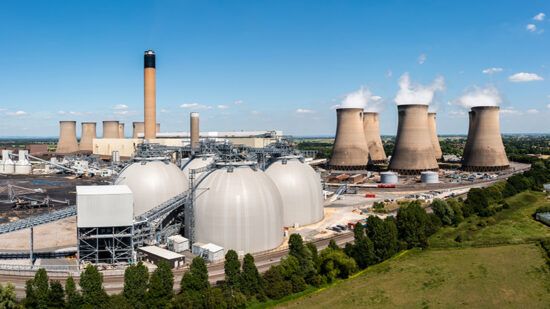Decarbonisation has become part of our everyday lexicon. Politicians, regulators, investors, businesses and charities all talk about the importance of transitioning to net zero and deploying capital for a low-carbon future. However, it is not as straightforward as building wind farms or installing solar panels.
Great strides have been made in the UK. Renewables output recently overtook fossil fuels for the first time; but decarbonisation of electricity generation is not solely enough to achieve a net-zero carbon emissions economy by 2050. We need to develop a ‘whole economy’ approach to decarbonisation.
A ‘whole economy’ approach will help ensure adequate demand, storage and the required supporting grid infrastructure for the additional supply of clean energy. To achieve this, we need the right mix of infrastructure, which has been thrust into the spotlight with the government’s Energy White Paper and will come into sharper focus in the run up to COP26. The key will be seeing the government’s ambition converted into detailed policy and procurement frameworks.
Steps to take
The first step is to increase our focus on the other contributors of carbon emissions. Transportation accounts for 28% of UK emissions. Although we are making steady progress with the rollout of electric vehicles, we need to do more.
The proportion of new sales of electric vehicles is increasing and hit a record 23% of new car sales in December 2020, but they still make up less than 1% of cars on the road. Increasing the supply of clean energy alone will not drive a wholesale adoption of EVs. For personal vehicles – the largest emitter in the sector – this will involve infrastructure development (more charging points, reinforced grids), innovation (better batteries to reduce range anxiety), coordination with local and regional government (development of low- and zero-emission zones) as well as changes to consumer behaviour.
Second, industrial emitters, representing 19% of UK emissions, should be further encouraged through regulation to reduce their emissions. In doing so, we have an opportunity to share knowledge and expertise. From steel to oil and gas, companies are learning from other industries and incorporating new developments in science and technology to understand how they can develop businesses that are tailored to climate adaptation. Some sectors are also facing common challenges, like how to decarbonise in a way that is fair and inclusive for the communities that surround them. The Task Force for net zero should make this one of their priorities.
A potential key enabler for the decarbonisation of industry is the development of green hydrogen. The technology is relatively simple – electrolysis to separate hydrogen from oxygen in water; it is the scale and cost savings that need developing. Green hydrogen has the unique combination of benefits: to utilise renewable energy whenever it is generated, to store energy for long periods of time, and be converted into thermal energy that can be used both by industry and to generate electricity. The EU’s economy is five times bigger than the UK’s but its hydrogen generation ambitions by 2030 are eight times greater.
Further, the EU’s target is 40GW of wholly renewable hydrogen compared to the UK’s target of 5GW ‘low-carbon’ hydrogen, which includes hydrogen from burning fossil fuels and seeking to capture and bury the carbon emissions. The UK has the opportunity here, as it already has in offshore wind and using existing funding structures such as Contracts for Difference and the Regulated Asset Base model, to step up its ambitions and lead.
Finally, we need to think about how we can support existing infrastructure. By 2040, 24GW of wind and solar capacity in the UK will be over 25 years old. It is vital that we give these sites the best opportunity to remain operational so as not to exacerbate the difficulties in achieving net-zero. This could mean that the sites are repowered, particularly new turbines for wind projects, or have their life extended. If there is a Contract for Difference mechanism operating, then existing sites must be allowed to bid into them following the end of any existing subsidy / support mechanism term, or alternative mechanisms to support power prices should be devised. Investing in current sites will help ensure our capacity of existing power generation is maintained and that some of the best weather resource sites around the country continue to be utilised.
As well as aiming to prevent the worst effects of climate change, the government’s plan for a green industrial revolution will play a critical role in creating new ‘green’ jobs, which will support the prime minister’s levelling up agenda. The private sector has an important role to play, and the government must deliver on its pledge to mobilise £12bn of public sector investment in green jobs.
Outside the UK, Norway has successfully incentivised electric vehicle adoption with subsidies, thereby building demand for its plentiful supply of clean energy. In September 2020, nearly 60% of new cars sold were electric and drivers had access to over 15,000 public charge points. With the added incentives around consumer tax benefits on buying, leasing and owning EVs, Norway has created a winning combination.
As the co-host of COP26, it is important the UK acts as a leader, helping to drive conversations and encourage other countries to contribute to the climate agenda. However, as with any good host, we should lead by example and accelerate the steps needed to decarbonise our entire economy.








